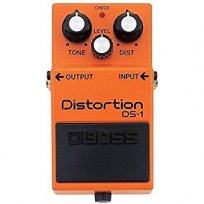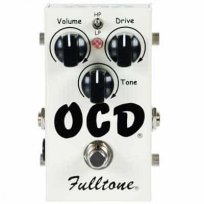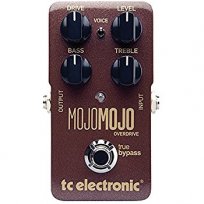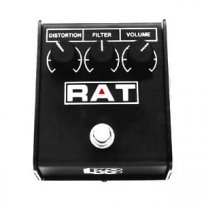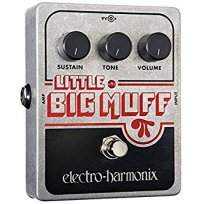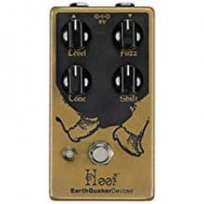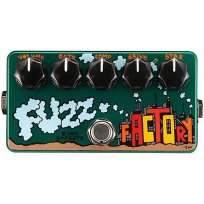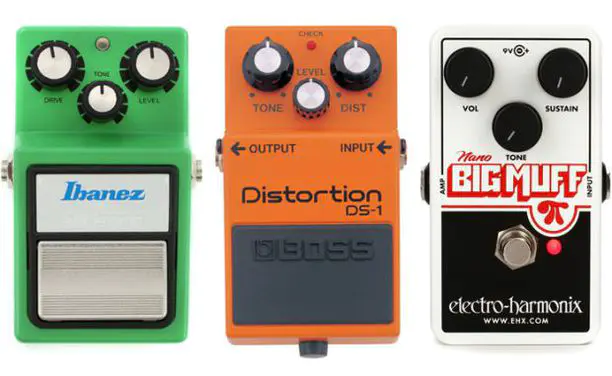
Click on the links for our coverage of recently released Overdrive, Distortion and Fuzz pedals.
For the beginner rock guitarist, a gain pedal is, in most cases, the third item on the gear-related shopping list (after a six-string and an amp). But, considering the wide choice of stompboxes out there, definitely a purchase requiring a fair amount of thought.
This article’s goal is to help the guitar novices among you choose their first gain pedal, highlighting the differences between the three effects in that realm (overdrive vs distortion vs fuzz), and pointing to a few popular and affordable models.
To illustrate the difference between the three effects, we decided to use BOSS pedals, because of their clean, no-frills approach and abundance of clearly labeled choices in their line. Besides, their excellent price/quality ratio makes them extremely popular among both beginners and pros.
TONE IS MORE THAN A PEDAL
Before we begin, it’s important to highlight that pedals are just one sonic component contributing to the final distorted tone, which is always the result of the interaction between these elements:
1. Your performance (instrumental skill and choice of pick – if any – can make a huge difference)
2. Your guitar model & components, plus the pick up configuration of choice
3. Strings (brand, thickness, state)
4. Pedals
5. Amp/Cabinet
(Super cheap cables can also affect the tone)
So, while the videos in this article can be a great reference, it’s always a good idea to try pedals in person with your own gear – because different guitars and amps interact differently with each other and with the pedal of choice.
OVERDRIVE VS DISTORTION VS FUZZ
Overdrive, Distortion and Fuzz have some differences that might appear subtle at first.
The main question you need to ask yourself at this point is: “How heavy do I want my distorted tone to sound?” and “should my distortion retain my guitar’s tone, or create something completely its own?.” It is also useful to try and identify what kind of distortion your favorite bands use in each song, so that you can slowly start to identify how each effect sounds and in what context works best.
Here’s a quick example of how three popular BOSS Overdrive, Distortion and Fuzz pedals sound:
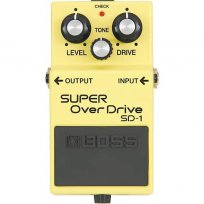
As you can hear from these demos, the BOSS SD-1 Overdrive is the least heavy of the bunch, and creates an amp-like saturation effect that retains some of the character of your clean tone (this quality is also referred to as “transparency”) and also some of the dynamics of your performance (it’s “touch-sensitive” or “dynamic”). This kind of sound is extremely popular in punchy but not overly loud genres ranging from blues, indie rock/pop, classic rock, dream pop, folk rock etc.
The BOSS DS-1 Distortion, by comparison, sounds a lot more… distorted and dirty, so much so that the guitar’s original tone gets lost, in favor of a heavier, harsher sound, where the subtleties of the performance get lost (less touch sensitive) and long notes seem to never fade (the sound is more compressed, less dynamic). This orange BOSS pedal was famously used by Nirvana’s Kurt Cobain, so it goes without saying that if you are after the guitar sound of grunge rock, this effect knows a thing or two about it. Steve Vai, Joe Satriani, Mike Stern, George Lynch are other top notch players regularly using this pedal, which has just turned 40 (a video of its 40th edition incarnation can be found here).
The BOSS FZ-5 takes things to an even dirtier and more compressed level. Often bordering into noise, it produces sputtery and raspy but full tones that at times don’t even sound like a guitar. Fuzz pedals were actually the first distortion pedals ever designed, appearing in classic recordings by the Rolling Stones (“(I Can’t Get No) Satisfaction”), Jimi Hendrix (Foxy Lady), and many garage and psych bands from the ’60s. More modern hit single using fuzz include Beastie Boys’ Sabotage and The Smashing Pumpkins “Cherub Rock.”
If what you are looking for is even more extreme, with massive amount of distortion and gain, you may want to look into pedals created with metal music in mind.
At the end of the day, though, the choice of your first distortion is really all about your ears and the tone they are seeking – there are thousands of gain pedals on the market, and each one of them has a slightly different sonic flavor! Let’s check out some of the most popular.
Here’s a video by Wampler using similar BOSS pedals:
—
OTHER CLASSIC OVERDRIVE PEDALS
If your ears are set on the sound of an overdrive, and if your budget allows it, the most famous and copied overdrive pedal ever made is the Ibanez Tube Screamer, first released in the late ’70s. To quote somebody who understands pedals: ‘The most popular use of a tube screamer is to push a tube amp to make it overdrive more, but it sounds good through almost anything.”
The Fulltone OCD is another classic from the ’90s, which started the “amp in a box” trend, adding more gain and versatility to the overdrive box, therefore allowing it to cover also some of the heavier distortion sounds. The Centaur Klon, also from the ’90s, has risen to legendary status due to its limited availability. The TC Electronic MojoMojo, with less gain and more transparency, is one of the most popular mid-priced overdrive of the new millennium.

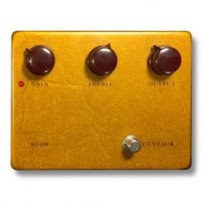
Find out more pedals like these in our Overdrive Pedals coverage
—
OTHER CLASSIC DISTORTION PEDALS
The term “distortion,” applied to guitar pedals, has grown a little tired in the augths, squeezed by the rise of increasingly more flexible and loud overdrives on one side and the insane proliferation of fuzz pedals on the other. However, a few classic distortion stompboxes are still seen on many boards. Debuted in 1978, the RAT is famous for its “bite” (mid frequencies that cut through the other instruments).
The dual gain Fender Pugilist was recently featured in our article about Distortion as the Best Distortion Pedal of All Time. For a British-style distortion, you may also want to look at the MXR M75 Super Badass ’75.
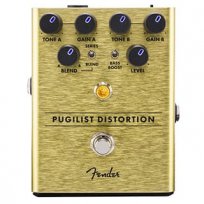
Click/Tap for video
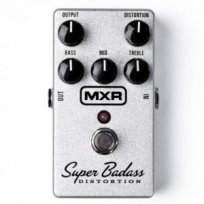
Click/Tap for video
Find out more pedals like these in our Best Distortion Pedals article.
—
OTHER CLASSIC FUZZ PEDALS
There are a million fuzz stompboxes out there these days, but these are true classics: the Electro Harmonix Big Muff was one of Jimi Hendrix’s pedals of choice. Dirty and somewhat muffled (hence the name), it certainly doesn’t lack character, and it’s the father of all modern fuzzes. The Hoof by EarthQuaker Devices is actually based on the Big Muff circuit, but gives you the option to mix in some extra mid frequencies for more bite. ZVex’s Fuzz Factory puts even more fun in fuzz, generating a wide variety of edgy and sometimes even crazy tones.
Find out more pedals like these in our Fuzz Pedals coverage















